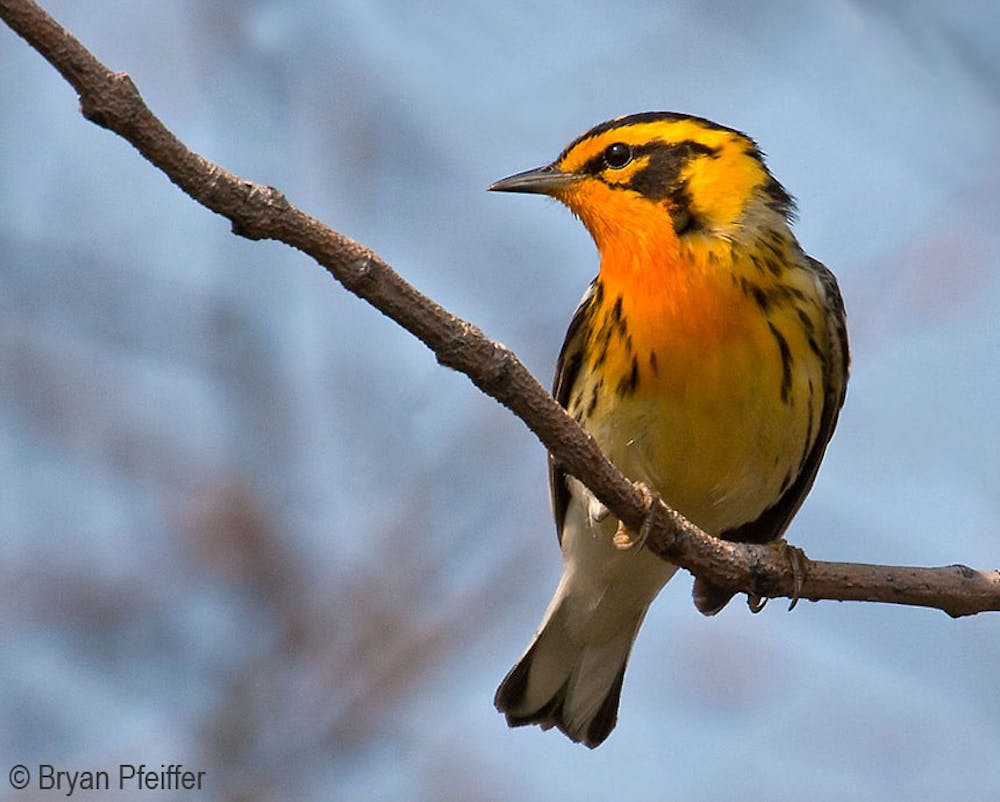In the spring, summer and fall, Vermont is filled with the sounds and sights of numerous birds and their songs – but according to a new study by the Vermont Center for Ecostudies, Vermont’s total bird population has declined 14.2 percent since 1989. 13 species of Vermont birds studied significantly decreased in population since the start of the survey, said Steve Faccio, the co-author of the study and an ecologist at the Vermont Center for Ecostudies.
The exact cause of the birds’ decline in Vermont is unknown, but is theorized to include multiple factors. Among these factors is the introduction of invasive species that are not native to Vermont, the global trend of general climate change, the fragmentation of Vermont’s forest ranges by humans and damage done to forests by acid rain.
The Vermont bird study was conducted by reviewing the culmination of 25 years of bird surveys completed by volunteers between 1989 and 2013. The study began with 11 survey sites in unmanaged and rural parts of Vermont forests and progressively expanded to 31 survey sites in similarly pastoral and undeveloped parts of the Vermont countryside. The study of the birds away from roads and developments allowed the researchers to get a better look at the purely natural and undisturbed ecosystem of the birds without a direct human variable.
The most intense decline was found in the type of insect-eating birds categorized as “aerial insectivores,” in which the population decreased 45 percent. This category includes birds such as the Vermont whippoorwill, nighthawk, chimney swift and tree swallow. The single most rapid decline of bird species was the common blue jay, which saw a 25 percent decline between 1989 and 2013 in Vermont. The specific cause of the decline of these insect-eating birds is not entirely clear.
“It seems likely that changes in insect abundance or the timing of insect emergence plays a bigger role than habitat loss,” said Steve Faccio, the co-author of the study, in an email to The Campus.
According to the study, changes in insect emergence stem from global climate change. Because of climate change, insects emerge and hatch earlier than usual, before the birds are active. This eventually results in fewer insects for the birds to consume, harming the bird population. According to Faccio, it is still too early to know definitively whether the change in insect emergence is the deciding factor behind the decline of the birds.
Apart from the population decline, eight species, including the pileated woodpecker, mourning dove and the American robin, increased in population. Many of the birds that declined slightly during the first decade of the study stabilized themselves during the last fifteen years.
When asked what Middlebury students and the community could do on an individual level to help protect birds and keep them healthy, Faccio responded, “Be mindful of the things that negatively affect forest ecosystems—fragmentation, climate change, invasive species—and do what you can to avoid contributing to those impacts, as well as opposing actions/policies that contribute to them.”
Recent Study Reveals Decline in Vermont Bird Populations Over the Past 25 Years

Comments



